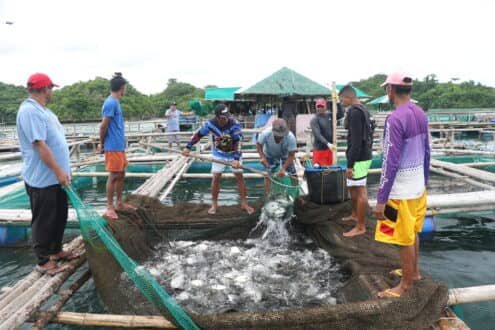By RD Dianala, J Genilza
The Phillipines.- SEAFDEC/AQD is stocking up on milkfish breeders, locally called sabalo, as part of the push to reduce the Philippines’ reliance on imported milkfish fry.
Forty-nine fish, each weighing between 3 to 5 kilograms, were recently acquired for conditioning at the Tigbauan Main Station to augment the stock of milkfish breeders used for research projects.
“The Philippines requires about 3.5 billion milkfish fry each year, but local hatcheries can only supply roughly half the demand,” said SEAFDEC Aquaculture Department chief Dan Baliao who added that the rest are imported from Indonesia and Taiwan.
To close the gap, SEAFDEC has been building its reserve of breeders and is working with the Bureau of Fisheries and Aquatic Resources (BFAR) to establish multi-species hatcheries around the country, each with a capacity to produce 25 million fry annually.
“It takes time for sabalo to mature, about three to five years wherein they reach at least 3 to 5 kilograms in weight, so we are developing breeders as soon as possible,” said Baliao.
Last year, SEAFDEC also acquired 78 milkfish to develop into breeders. In all, more than 300 milkfish breeders are already housed in SEAFDEC Aquaculture Department’s headquarters in Tigbauan and Igang Marine Station in Nueva Valencia, Guimaras.
SEAFDEC holds the record for being the first in the world to develop captive fish breeders, some of which are still in its care. The oldest sabalo in Tigbauan is over 36 years old, more than 18 kilograms, and still spawning.
Stay Always Informed
Join our communities to instantly receive the most important news, reports, and analysis from the aquaculture industry.
Editor at the digital magazine AquaHoy. He holds a degree in Aquaculture Biology from the National University of Santa (UNS) and a Master’s degree in Science and Innovation Management from the Polytechnic University of Valencia, with postgraduate diplomas in Business Innovation and Innovation Management. He possesses extensive experience in the aquaculture and fisheries sector, having led the Fisheries Innovation Unit of the National Program for Innovation in Fisheries and Aquaculture (PNIPA). He has served as a senior consultant in technology watch, an innovation project formulator and advisor, and a lecturer at UNS. He is a member of the Peruvian College of Biologists and was recognized by the World Aquaculture Society (WAS) in 2016 for his contribution to aquaculture.



